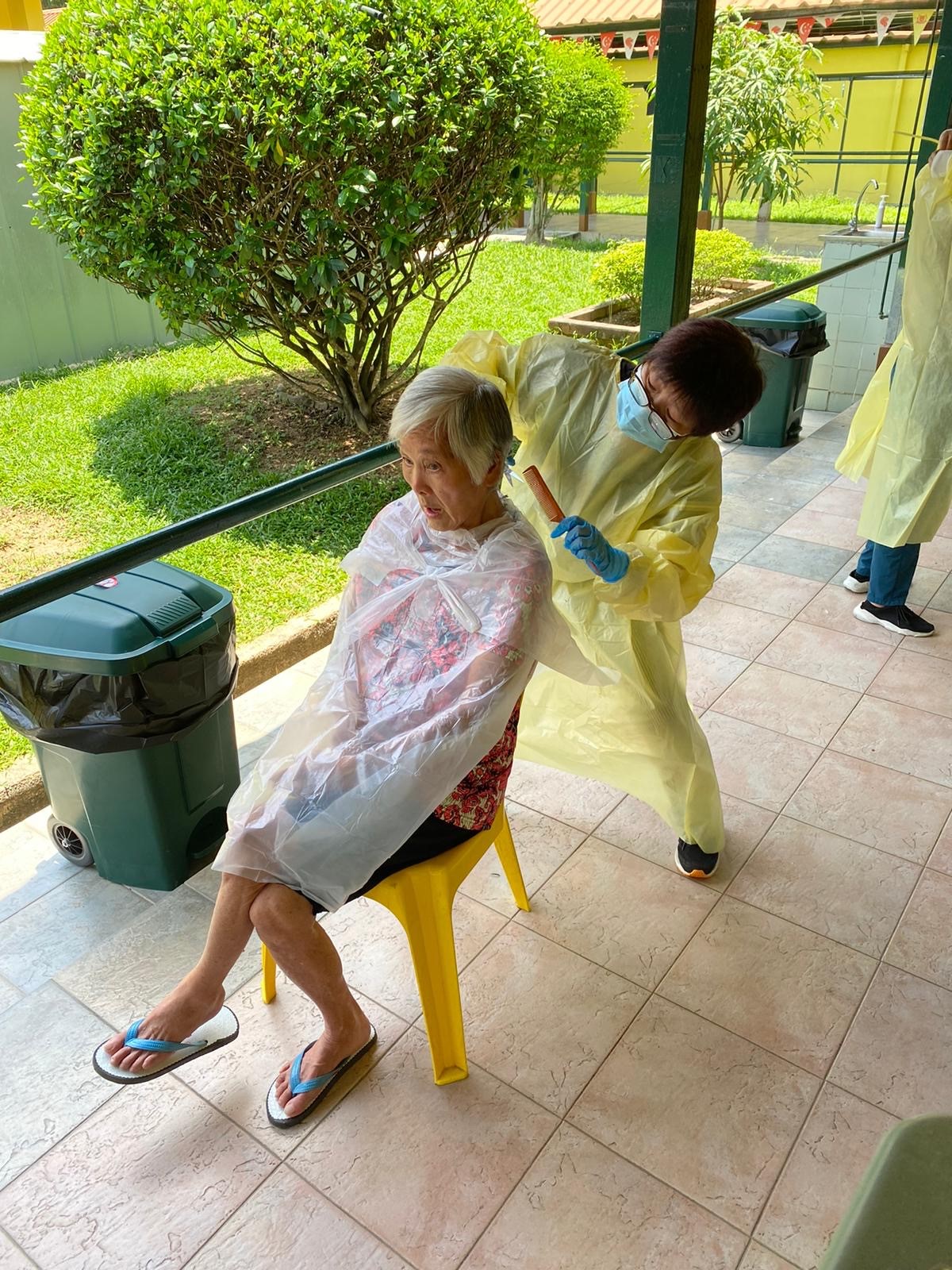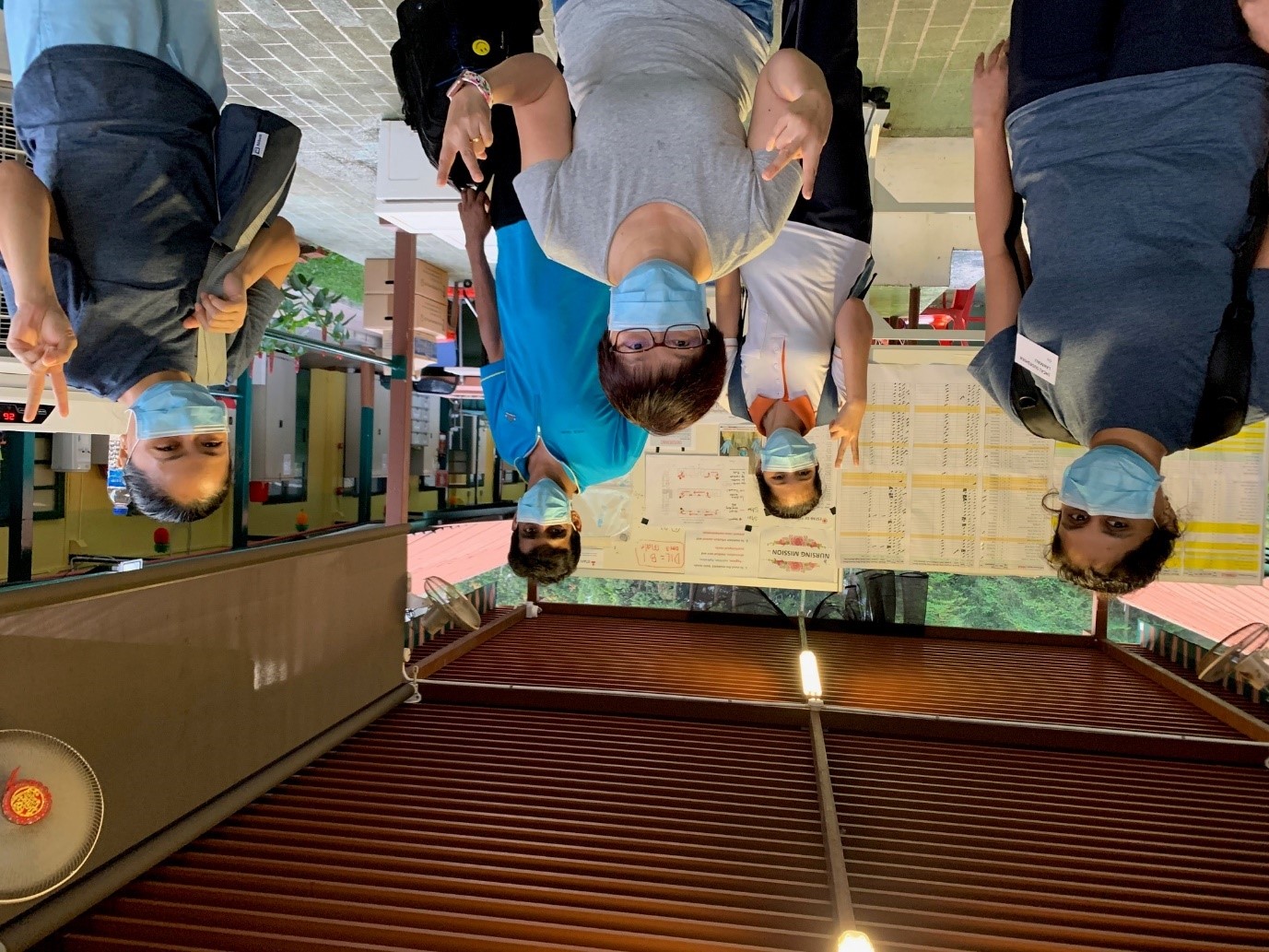Dr Betty Kwong, Assistant Director of Nursing, St John’s - St Margaret’s Nursing Home
When I was seconded to Lee Ah Mooi Old Age Home (LAM) in the capacity of acting Assistant Director of Nursing, the home had already reported 11 COVID-19 confirmed cases (nine residents and two nursing care staff). Working alongside the Agency for Integrated Care (AIC) and the Director of LAM, I was well aware that I would be caring for about 99 residents who might have been exposed to the COVID-19 virus. However, I did not feel any fear of safety for myself. Instead, my only fear was that my staff would “throw in their towels”, leaving me with insufficient manpower.
As the extent of infection spread was unknown, the entire nursing and administrative teams of LAM were quarantined. Nursing staff from other nursing homes volunteered to be deployed to LAM and were brought in to support growing operational needs. Precautionary measures such as wearing Personal Protective Equipment (PPE) before entering all nursing wards was made compulsory for all staff. Additionally, infection control practices with routes for clean and contaminated areas were established. This meant that we could only move around using specific routes for entry and exit. Care processes also had to be changed to minimise the sharing of items and cross-infection.
Despite our best efforts to ensure a safe working environment, results of the second swab showed that three more LAM residents had been infected. This increased the apprehension in the home, reminding us of the stark reality of the situation. In addition, we also faced challenges when providing care to the residents. We had to work in a new nursing environment with colleagues from different homes, endure the sweltering weather in PPE and manage residents (some of whom suffer from dementia) who were unfamiliar with the new staff. There were a few situations where nursing staff who had arrived for duty were not sure if they could cope with the demanding working environment.
I assured them that I would not put them at risk, and made sure I backed up my words by working alongside them on the front line. We also reiterated the need for everyone to comply with necessary precautions to prevent further contamination. Yet, I could still sense their anxiety. It was really helpful to have a dedicated social worker from Tan Tock Seng Hospital who was there to support our nursing team during these stressful moments – by engaging, listening and counselling distressed staff – often till late into the night.
Initially, many residents were confused and apprehensive as we donned gowns and masks. There were occasions when some of the residents with dementia got physically or verbally abusive, demanding to see their relatives. So we reached out to their family members and arranged “visits” from a distance – via teleconference calls and visits from outside the gate. Thankfully, most residents got used to the situation and recognised us after a week. I felt that most of them were glad to have us around.

One memorable moment was when I became an interim “hairdresser” for a resident who insisted on having her hair trimmed. This was a job I had never undertaken as a nurse, but the resident had approached many nursing care staff expressing her wish and I decided to accede to her request.
This period has been challenging, but there have been many sweet moments that were my sources of strength. At home, my husband and daughter gave me their blessings after I had told them of my decision to serve in LAM and understood the need for me to maintain personal isolation at home. My daughter even pampered me with chilled cosmetic hydrating masks, when I developed rashes on my cheeks and chin due to the heat and sweat, which caused an allergic reaction to the face masks.
At work, the nursing team recited the Nurses’ Pledge and reminded ourselves of our passion for the profession. We had also choreographed dance steps and incorporated them to our daily routine to encourage and motivate ourselves before the start of duty. Additionally, we dedicated a song to the incumbent LAM team (who were to return after their quarantine) to spur them to continue fighting the battle. These acts not only affirmed our nursing identity and gave us the strength to persevere, but it also boosted our morale and united us as one in our profession.
Even though the hot weather and long hours were physically exhausting, I never once thought of giving up. We were blessed with sunlight that shone through the corridors of the wards and naturally “disinfected” the environment. The ward buildings were also well-distanced, with good ventilation. Fortunately, we have had no new cases or cross-infection since.

I am blessed with a good support system – my family and friends, colleagues who volunteered to be part of the team at LAM and peers from AIC and the Director of the home who trusted and supported me. My conviction and commitment as a nurse drives me to work every day. I see it as my duty to help out fellow Community Care staff at LAM.